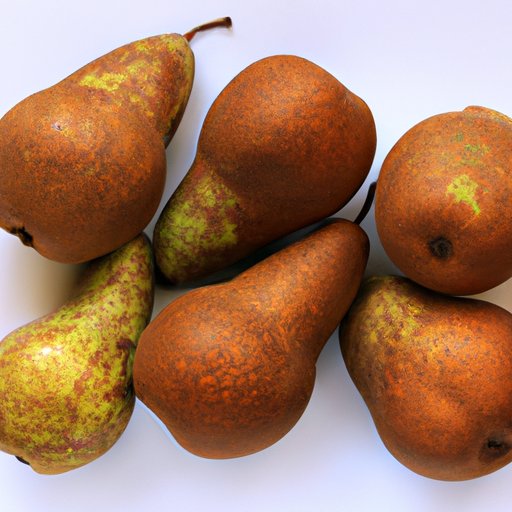
Introduction
Do you find it hard to identify whether a pear is ripe or not? It can be challenging for many people, and it’s not uncommon to bite into a hard, unripe pear accidentally. This article intends to solve that problem. We’ll offer a comprehensive guide that includes expert advice on identifying a ripe pear and how to store it correctly.
A Comprehensive Guide on How to Tell if a Pear is Ripe
The color of the pear will vary depending on the type of pear, so do not rely on color to determine ripeness. Instead, check the stem. If the stem can easily be twisted, your pear is most likely ripe. If it does not readily twist, your pear is not ripe yet. It is better to ripen the pear at room temperature until the stem can be twisted off quickly. If the stem comes off with little effort, check the bottom of the pear where it sat on the fruit bowl or store shelf. If it is soft to the touch, it’s likely the pear is ripe.
The texture of the fruit also signals ripeness. A ripe pear will feel supple yet firm when pressed gently on its sides. If it feels hard and unyielding, it’s not ready. On the other hand, if it feels excessively soft or mushy, it indicates an overripe pear.
Finally, the aroma of a pear can determine its ripeness. An unripe pear will possess little to no fragrance, while a ripe one has a sweet, fruity aroma.
Tricks of the Trade
Aside from the stem test, there are additional ways to test the ripeness of pears. You can use the neck test. To do this, hold the pear around the neck area and apply gentle pressure with your thumb. If the flesh yields to pressure, the pear is ripe. Another way is the aroma test. Bring the pear up to your nose and inhale. If it smells sweet and fragrant, it’s most likely at the peak of ripeness.
The Best Storage Methods
Understanding how to store pears for optimal ripening is the final piece of the puzzle. Pears require specific storage conditions, which make them challenging to store alongside other fruits. The best way to store them is to keep them at room temperature until they are ripe. Once they feel soft and ripe, move them to the refrigerator to prevent over-ripening. Avoid placing the pears in a plastic bag as it may trap moisture, which can cause rot.
Lastly, avoid storing pears near ethylene producing fruits like bananas, apples, and kiwis as they will ripen faster and may even turn bad before they’re ready for use.
Visual Guide to Identifying Ripe Pears

If it’s your first time buying pears, you may have a hard time differentiating between the different types of pears in the market. Some common varieties include Bartlett, Bosc, and Anjou pears. Each variety may have different colors, shapes, and textures you should familiarize yourself with. Pears also vary in texture, ranging from soft, juicy fruit to firmer, more crispy ones.
Expert Advice on Pear Ripeness
To offer a deeper understanding of pear ripening, let’s hear from experts from within the industry. According to fruit experts, “the process of ripening occurs due to a natural plant hormone called ethylene. As the fruit ripens, it produces more ethylene, which speeds up the process of ripening. However, be careful not to confuse overripe fruit with a natural process of ripening.”
Expert advice offers us a better idea of visual and tactile signs of ripeness and tips on how to identify them for optimal use.
Conclusion
Now that you know everything about how to tell if a pear is ripe, it’s time to enjoy a sweet, juicy fruit. Remember, you can always use the stem test, neck test, aroma test, and texture test to determine if your pear is the perfect ripeness. Also, consider the storage method and the ideal conditions for storing pears.




